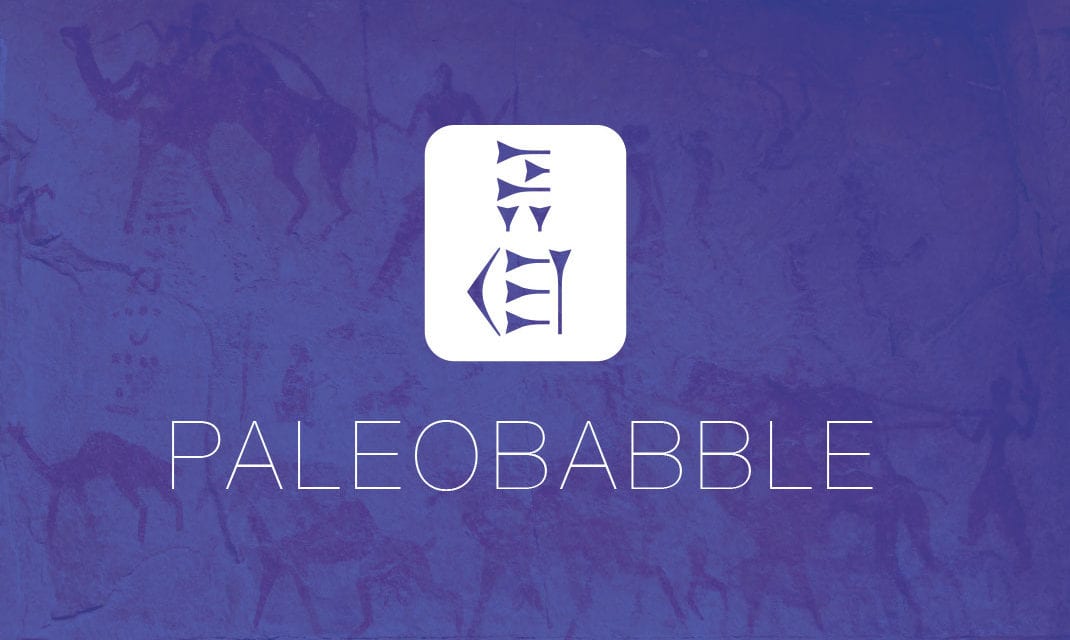This is the title of an old (1984) journal article I recently came across. The article is from American Antiquity 49:3 (1984): 525-541. Here is the abstract:
An important aspect of archaeology is communicating the significance of data and research results to a fasci- nated, although often uninformed public. However, on the basis of book sales, newspaper coverage, television programming, and film presentations, it would seem that the public is inordinately fascinated by the more extreme, speculative, and often pseudoscientific claims made by those purporting to use archaeological data. Through questionnaires distributed to undergraduate students and to professional, teaching archaeologists, I made an attempt to comprehend the nature of the public’s appetite for pseudoscientific archaeological claims. The role of education in refuting or perpetuating pseudoscience in archaeology was then assessed.
Enjoy!






Dr Heiser,
Great info as always. This blog served as a reminder that I need to ask two questions of you for a future debunkumetary I am making.
Michael Tsarion has claimed the following things and I thought you could help point me in the direction to refute each one.
1.) that the egyption word ankh means annunaki, if you ad the vowel sounds (like hebrew) I.E. an nu nk hi, and he says that it means “heavenly serpents”
2.) That Nazareth or nazir presumably a word for Nazareth came from from nasi meaning sirius so Nazareth means “na sirius” and a followup blasphemy is that carpenter comes from naggar which he says means “serpent priest”
Any help would be greatly appreciated and effectively used.
Chris
As I was reflecting upon this journal article, I started to think of the most recent example of irrational popular archaeology, the 2012 “end of civilization” theory. Now I am not saying that we know for certain what is going to occur, but what intrigues me is the so called Mayan civilization experts who have emerged as of late and find their way onto certain programs on certain “reputable” cable channels. I admit that I once believed these documentaries exclusively assuming they were attempting to be objective, but as I found the opposite to be fairly true, I chose to do my own independent research. Now I am no Mayan expert, but based upon this journal article I suspect that what we see being presented in popular culture as archaeology should be taken with a grain of salt until the objective arcaeological data can be analyzed and properly applied.
@Chris White: great word: debunkumentary!
Tsarion is spouting BS (what a surprise). On the items:
1. uh…Egyptian and Sumerian are two different languages and completely unrelated (Egyptian is in the Afor-Asiatic family; Sumerian isn’t inany family – it is officially “unaffiliated” according to linguists). Any source on the world’s languages will tell you that. This is merely the “sounds similar, must be a relationship” buffoonery. Yeah, like the German word “madchen” (“little girl”) sounds like the verb “made” – that must mean there is a relationship – in the ancient world (or some other universe – no wait, maybe in Atlantis) all tasks that involved taking raw materials and fashioning them into something else was done by little girls! All you need for the meaning of Anunnaki is the Pennsylvania Sumerian dictionary, first volume – I used to have the scanned entry photo’d and on my site. I can send it to you if you need it (email me).
2. “nazir” and “nasi” have different consonants’ “sirius” does not mean serpent. “Sirius” comes from the Greek seirios, which means “scorcher” (the rise of Sirius was in the season of greatest heat – summer). It is close in spelling to seiraios, which means “twisted” – but again, they are two different words. The word for “carpenter” (the word by which Jesus is described) in the New Testament is “tekton” (long o – omega, not to be confused with tekton, short-o omicron, which means “child”). Again, no relationship to Tsarion’s nonsense.
If you have a specific source citation for this crap, let me have it so I can blog it, too.
@neoargon: of course – theories need to be testable and falsifiable.
I’ve noticed these kind of horrifically poor inferences in anthropology (especially neanderthals) as well, examples:
1. A cave that was once inhabited by neanderthals has random scratch marks on the floor? Must be early art and proof neanderthals were abstract thinkers.
2. Found neanderthal remains in very cold climate? They must have been able to sow clothing.
3. Found traces on pollen in neanderthal burial site? Must have had a funeral with flowers proving neanderthals were abstract thinkers.
4. Found some rocks moved around in a vague circle in a save? Must be some sort of cultic ritual.
5. Found neanderthal remains on island? They must have made boats.
Aghh…